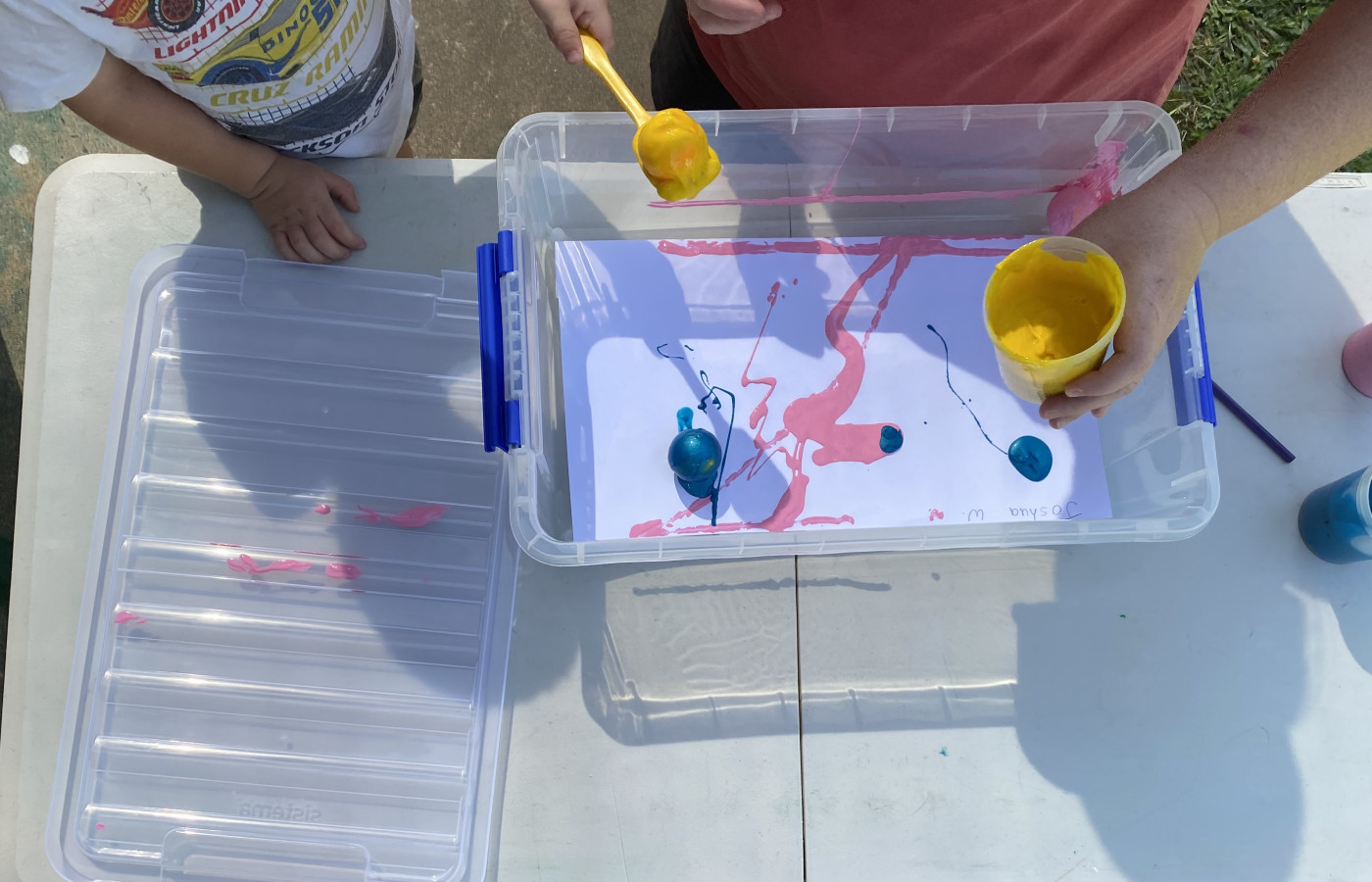Rolling ball painting

Rolling ball painting
Roll painted balls on paper inside a box
Materials Required
- Apron or old clothes
- Plastic container with secure lid or a cardboard box
- Blank paper to fit the size of the container or box
- 2 or 3 different colours of paint
- Bowls that will fit the ball easily
- Spoons
- Golf balls or other round objects, such as small rocks or tennis balls
Play experience profile
-
Ages:
-
Min Playtime5 - 15 Minutes
-
Skills
-
Energy LevelActive play
-
Messiness Rating
-
EYLF Outcomes
Play Experience Preparation
Select the location to set up the activity where messy play is okay, outside would be perfect - Have access to water and a towel for washing hands and cleaning up - Put the art smock on or old clothes - Pour each colour of paint into separate bowls, filling about halfway - Add a ball to each bowl of paint - Add a spoon to each bowl of paint - Place the paper along the bottom of the container or cardboard box.Experience Steps
- Using the spoons in each paint bowl, cover the ball with the paint.
- Scoop the paint covered balls out and place onto the paper into the container. Repeat for each colour.
- Secure the lid onto the container or close the cardboard box.
- Encourage your child to move the container in different directions to make the balls move around the paper.
- When finished, remove the lid.
- Using the spoon remove balls and place back into the bowl.

What to talk about, or questions to ask during the experience
- Use directional words such as in, out, up, down with your child to describe the movement of their body, the container and the balls.
- Use words that describe the speed of the movements that you are making, such as fast or slow, smooth, or rough.
- What happens when the colours mix and blend together?
- How can we make the balls move?
- How can you make the balls move in different directions?
Build on this...
- Use different balls such as marbles.
- Use different colours to explore colour mixing.
- Use a magnifying glass to have an up-close look at the patterns they have made.
- Create ramps to roll balls with different textures and size.
- Create an obstacle course inside the container to guide the balls through.
WHO guidelines for physical activity and sedentary behaviour
Provide evidence-based public health recommendations for children, adolescents and adults on physical activity.
Learn more
Provide evidence-based public health recommendations for children, adolescents and adults on physical activity. Learn more
This activity allows children along with their parents and/or carers to participate in physical activity.
Children will be actively shaking, lifting and tilting the container to move the ball.
Children will be using big arm movements and bending their bodies into different positions.
EYLF Outcomes
The Early Years Learning Framework has been designed for use by early childhood educators working in partnership with families, children’s first and most influential educators.
View PDF
The Early Years Learning Framework has been designed for use by early childhood educators working in partnership with families, children’s first and most influential educators. View PDF
- Children develop dispositions for learning such as curiosity, cooperation, confidence, creativity, commitment, enthusiasm, persistence, imagination and reflexivity
- Children resource their own learning through connecting with people, place, technologies and natural and processed materials
- Children begin to understand how symbols and pattern systems work
EYLF Principle
Principle 1: Secure, respectful and reciprocal relationships. Through a widening network of secure relationships, children develop confidence and feel respected and valued.
EYLF Practice
Practice: Learning through play. Play can expand children’s thinking and enhance their desire to know and to learn. In these ways play can promote positive dispositions towards learning. Children’s immersion in their play illustrates how play enables them to simply enjoy being.
Author:


